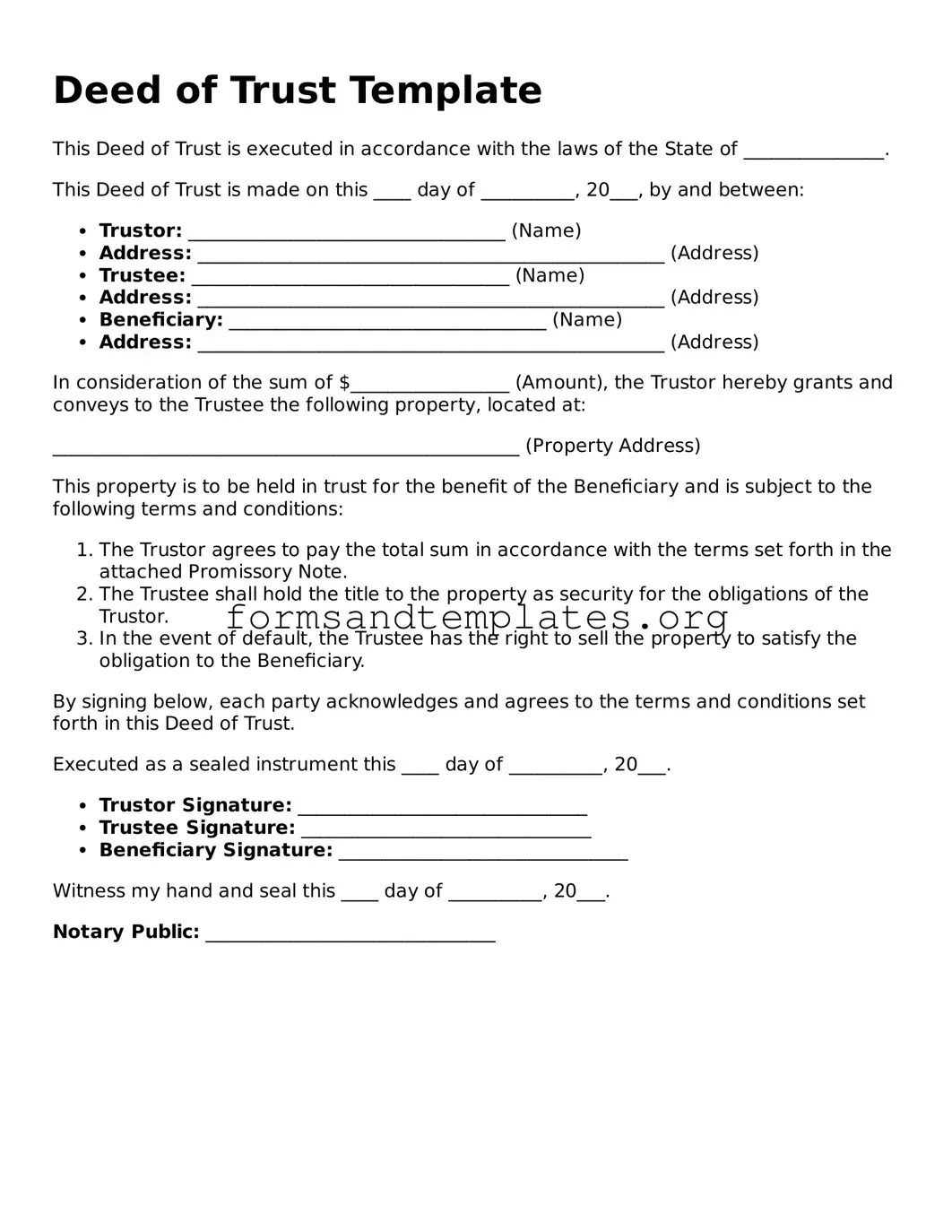Deed of Trust Template
This Deed of Trust is executed in accordance with the laws of the State of _______________.
This Deed of Trust is made on this ____ day of __________, 20___, by and between:
- Trustor: __________________________________ (Name)
- Address: __________________________________________________ (Address)
- Trustee: __________________________________ (Name)
- Address: __________________________________________________ (Address)
- Beneficiary: __________________________________ (Name)
- Address: __________________________________________________ (Address)
In consideration of the sum of $_________________ (Amount), the Trustor hereby grants and conveys to the Trustee the following property, located at:
__________________________________________________ (Property Address)
This property is to be held in trust for the benefit of the Beneficiary and is subject to the following terms and conditions:
- The Trustor agrees to pay the total sum in accordance with the terms set forth in the attached Promissory Note.
- The Trustee shall hold the title to the property as security for the obligations of the Trustor.
- In the event of default, the Trustee has the right to sell the property to satisfy the obligation to the Beneficiary.
By signing below, each party acknowledges and agrees to the terms and conditions set forth in this Deed of Trust.
Executed as a sealed instrument this ____ day of __________, 20___.
- Trustor Signature: _______________________________
- Trustee Signature: _______________________________
- Beneficiary Signature: _______________________________
Witness my hand and seal this ____ day of __________, 20___.
Notary Public: _______________________________
